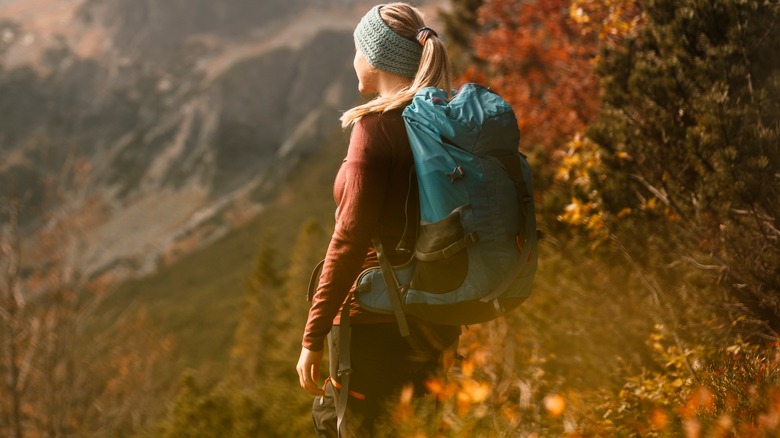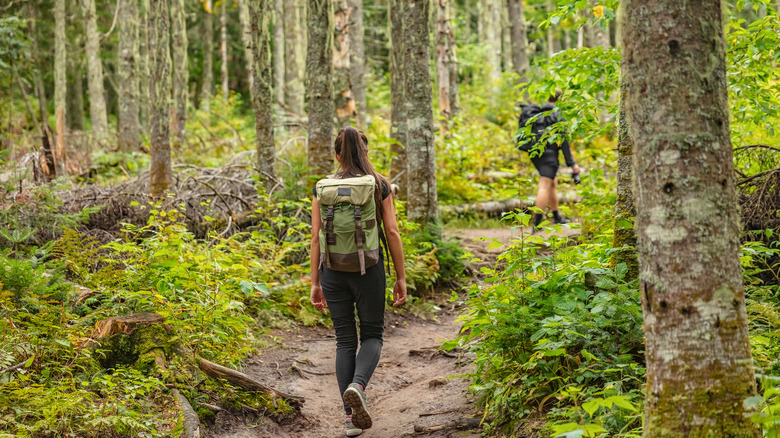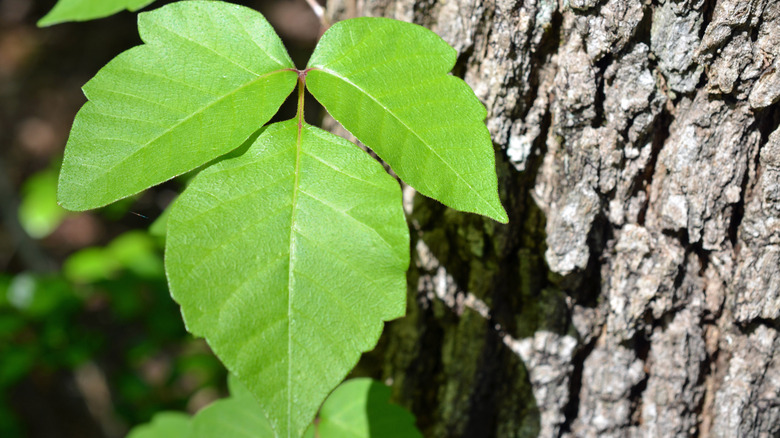How To Incorporate Hiking Into Your Wellness Routine
We may receive a commission on purchases made from links.
Most people who haven't tried hiking are aware that it involves walking outside but aren't sure what exactly makes it different. Indeed, sometimes referred to as "spicy walking," hiking is just walking in nature, typically on an incline for at least part of the time. Since elevation levels vary in nature, walking outside can provide a better workout for your muscles than walking on the relatively flat ground around your neighborhood, according to Hike Authority. It's also more of a cardiovascular challenge to tread up and down hills.
Hiking offers more than a better workout, however. It's a free form of exercise nearly anyone can access and provides motivation for getting out into nature. Spending time outdoors outside of an urban environment can offer significant mental health benefits. In fact, a study by Stanford University found that walking in nature for 90 minutes can decrease activity in the part of your brain that's responsible for negative self-talk. Walking for the same amount of time in an urban setting, unfortunately, was not found to offer the same benefit. Now, here's how to get started with your new hiking routine.
How to get started
Before you run out for your first hike, make sure you dress appropriately for the conditions. Regular workout attire and tennis shoes in good condition will be just fine, as long as you don't mind them taking a bit of a beating from the elements. Clothes should breathable, warm enough, and offer protection from sun exposure. Insulating layers are a smart choice since weather can change quickly. According to Clever Hiker, hikers should always carry a backpack with essentials like a full water bottle, a cell phone with GPS, sunglasses, sunscreen, a flashlight, matches, and a snack or two. When you move on to tackling more difficult trails with rougher terrain, Hike Authority advises that you consider investing in a pair of hiking boots to better grip slippery and uneven surfaces. For example, one good pair is the Columbia Women's Newton Ridge Plus Waterproof Amped Hiking Shoe, which has 4.5 out of five stars on Amazon.
Next, select your first hiking trail using a service like AllTrails. Stay humble and resist the urge to skip trails labeled easy or beginner. You may even want to begin by just walking through local public parks. Even if you're in relatively good shape and walk often, hiking is a uniquely energy-draining activity that requires an adjustment period, according to the U.S. National Park Service. While your leg and core muscles adjust to the constant changes in incline and stability underfoot, you don't want to add in the stress of becoming stuck or lost. Start your hike as early in the day as possible to avoid ending up in an unfamiliar area in the dark and stick to distances under five miles.
Safety precautions
Hiking offers significant benefits to your physical and mental well-being, but it does come with risks. If you've ever spent time watching Investigation Discovery, you know that hiking alone in very remote locations can leave you in a vulnerable position. If you're not hiking with a friend or a group, stick to trails that are at least moderately populated. Always stay on the trail and avoid wandering into the wilderness where you could become lost or inadvertently damage the natural environment (via Anaheim Regional Medical Center).
Consider adding a small first aid kit to your gear in case you slip and fall or have a run-in with thorns or other foliage. Spend some time becoming very familiar with the poisonous plants and venomous creatures of your local area, as advised by the American Hiking Society. Identifying and avoiding poison oak or ivy is much easier, once you know what to look for, than trying to relieve the symptoms they cause after contact. When proper safety precautions are taken, hiking is a perfectly safe activity for people of all ages.


